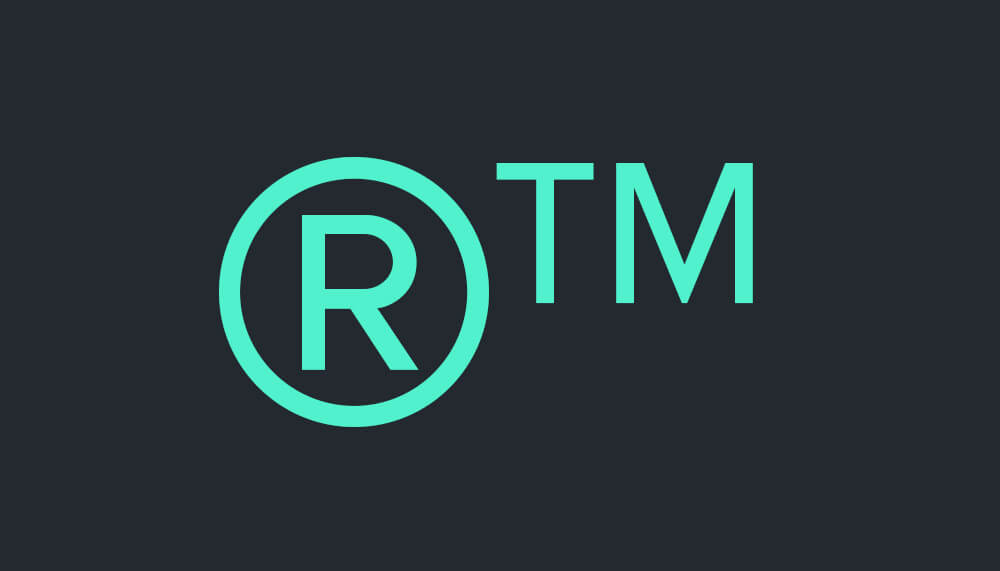Intellectual Property (or simply IP) is the general name for the field of law which deals with protection for trademarks, patents and copyrights – all of which legal ‘tools’ developed for and used by companies in order to be equipped to maintain the exclusivity of their advertising properties and/or inventions and to rightfully object to competitors infringing on these rights. While all of these separate IP rights have their own corresponding symbols, I will only discuss those related to trademarks in this contribution.
Most of the visitors of this blog will be familiar with symbols such as ® and TM. These symbols – both used in conjunction with brands – are used in order indicate to competitors that a company owns certain rights, trademark rights to be precise. Perhaps not all of you will be fully aware of the legal implications these symbol bear. This contribution serves as a practical guideline with respect to the use of these well-known symbols. The funny thing about these symbols is that in neither of the legislation within the EU there are actual rules about the allowed use. However, while not punishable by law, companies may not freely use ® whenever they please, and ultimately, there are in fact rules (and to the very least understandings).
The trademark
A trademark – the word us legal folks use for ‘brand’ – could be considered as the identity of a company or, as the case may be, a line of products. While I will not (ab)use this forum to get into the theoretics behind the ratio or conditions of obtaining trademark protection, I will say that in order to enjoy protection in general a) the trademark in question has to have a certain distinctive capacity (in other words, it may not be descriptive for the respective goods or services ) and b) a request for trademark protection has to be filed with the local trademark office (or the EU trademark office), which has to be validated by this office. In other words, in neither of the EU countries does the use of a trademark alone constitute trademark rights.
Once a trademark registration is obtained, the owner is entitled to freely use the ® symbol (standing for “registered trademark”), next to the trademark. Once registered, there is, however, no requirement to use the ® symbol. If the ® is used, it will be clear to competitors that the mark in question is registered and is, in fact, enforceable in a court of law.
Trademark Registrations
Companies should be aware that trademark registrations are in many cases obtained on a national level (if we disregard to the possibility of an EU wide trademark registration). As a result, the use of the ® symbol in a different country – where the same trademark is not registered – is in general regarded as an act of unfair competition. For instance, a registration of a trademark in the Benelux does not justify using this symbol in, let’s say, Norway (a non-EU country). However, the Court of Justice of the European Union has made life a bit easier on EU wide operating companies by allowing the use of ® within the entire EU on the condition that the company in question owns a registration in at least one country within the EU. According to the Court, this follows from the free competition provisions of the EU legislation.
In other countries, such as the USA, premature use of the ® symbol is even considered “fraudulent” and may even be subject to repercussions, for instance being denied trademark protection altogether.
The other symbol used in relation to trademarks is the TM symbol, which may be used by all companies in conjunction with a sign that the company considers as (one of) its trademark(s) or advertising properties. In practice, this would mean that the TM symbol is used to indicate that a request for a trademark registration was filed, but even this is not required. Particularly in countries with different legal traditions, which – unlike the EU – do not require a registration to enjoy trademark protection, such as the United States, the TM symbol mostly merely represents that the respective commercial sign is considered as an exclusive advertising property (even though no trademark registration was obtained). Perhaps this symbol is best described as an indication that the company will try and take legal measures in case other parties use the same or a similar specific sign.
All of this particularly comes into play in the event of a cross-border distribution of printed advertising materials, such as brochures or stickers affixed to the products. You can imagine that in not all of those countries a trademark registration will be obtained (there might not even be a request for a registration). Strictly speaking (and taking into account the example of the United States) a company might feel hesitant to print the ® symbol onto all of the advertising materials. On the other hand, adjusting all materials to the trademark status of each respective country is not a satisfactory (after all very expensive) solution, unless we are speaking of solely the EU. In the event of worldwide distribution, using only the TM symbol is be an outcome: the use of this symbol is not prohibited by any rule of law in any country, but it does make competitors aware of the trademark value of a specific sign. A company such as Chiquita Brands uses this same strategy and affixes the TM symbol on stickers applied onto many of their fruit products all over the world – even though their Chiquita mark is registered in many countries.
Other issues
Another issue related to the ® or TM symbol is the question whether or not to include these symbols in the request for the registration of a trademark. My brief answer would be: don’t do it. As indicated above, there is no requirement to use the ® symbol. Equally, there is no benefit or even purpose in including either of these symbols in the registration request.
While the use of the ® and TM symbol is not directly subject to legal provisions, they both imply different legal consequences. When properly used, companies may be in a position to make it clear which of their advertising properties will be and can be enforced in court.
Questions about other IP symbols or other IP related questions?
Contact a lawyer specialised in IP or ask for help at your local design organisation.
This article and the information in it does not constitute legal advice. It is also not a substitute for legal or other professional advice. Users should consult their own legal counsel for advice regarding the application of the law.

